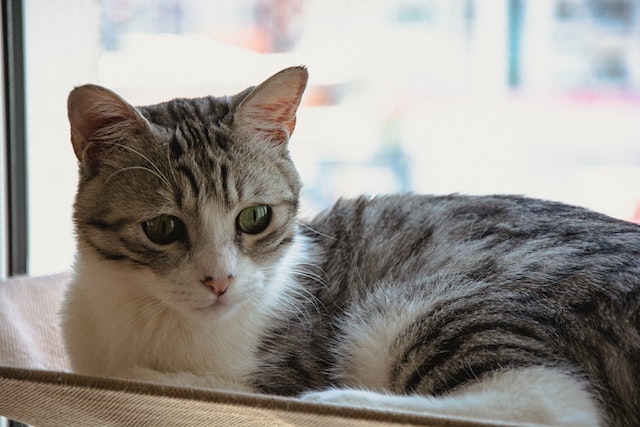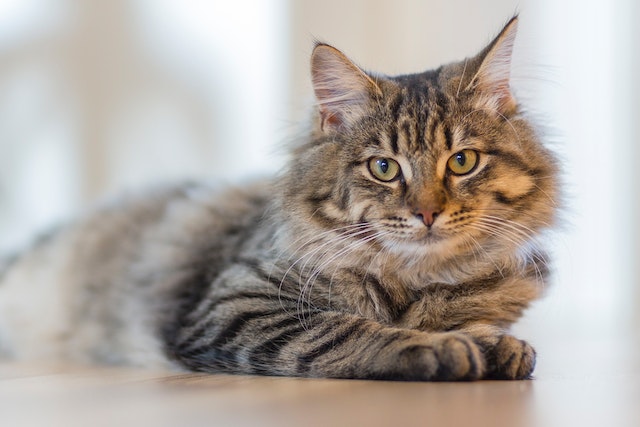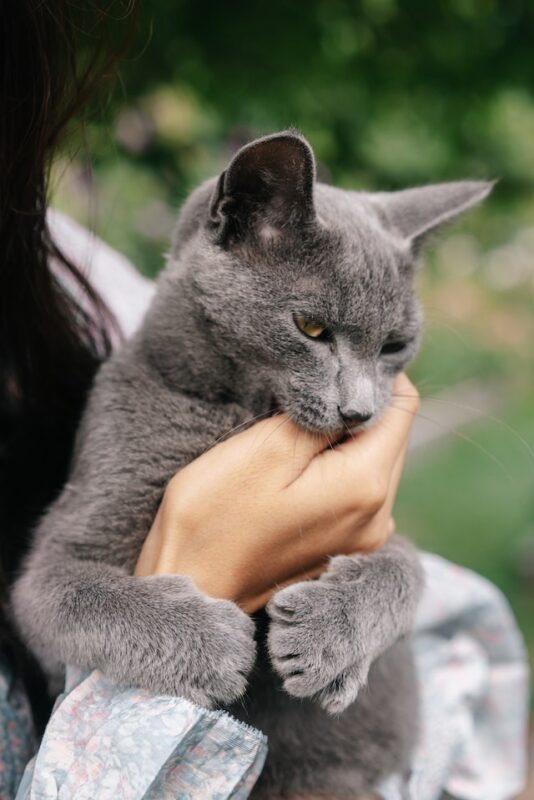Getting a Sick Cat to Eat
Posted: 08/18/2022 | BY: Jenna Bruce | Categories: Cat , Pet care , Top Tips
If you are fortunate enough to share your life and home with a cat (or two or three), then you know they typically come running at 55MPH when they hear you open a can of their favorite food or that crinkly treat bag! So it is very worrisome, to say the least, when your cat refuses to eat even their favorite treat.
If you are wondering how to get a sick cat to eat, keep reading. We’ll cover the most common reasons cats won’t eat and some ways you can try to persuade them.
Why Won’t My Cat Eat?

Before you can begin to try getting your precious fur baby to eat, it’s important that you know why your feline friend has stopped eating in the first place. There are actually quite a few reasons why cats sometimes refuse to eat:
Pain
One of the most common reasons cats stop eating is because of pain. Gum disease and dental issues are typically the main culprits, however, pain stemming from other medical issues, such as oral cancers and eye disorders, can also cause your cat to lose its appetite.
There are other signs you can look for that indicate your cat is in pain, and some specifically point to pain coming from a dental issue:
- Losing a tooth or multiple teeth
- Swelling of their face
- Smelly breath
- Dropping food or becoming messy when eating
- Drooling
- Swollen or red gums
- Stopping grooming
- Poor coat condition
Loss of Sense of Smell
Cats rely heavily on their sense of smell when eating. So should they develop any kind of nasal congestion from a virus, rhinitis, or nasal cancer, they may not eat as much.
Age-Related Health Issues
Elderly cats tend to have a diminished sense of smell and are also far more likely to suffer from health issues, such as arthritis, which can make them less active. This results in a cat who eats far less.
Older cats also tend to become dehydrated, which can lead to constipation, and this can also cause them to want to eat less. High fiber cat foods can help in this situation.
Environmental Stressors
Cats are incredibly sensitive animals that are affected greatly by things that happen in their environment. For instance, moving to a new house can be enough to stress your cat to the point of them losing their appetite. Bringing a new pet into the house can also cause them stress. Or should a member of your family, two-legged or four-legged, pass away, this, too, can impact their appetite.
Food Aversions
Cats can develop an aversion to certain foods just like humans can. If you were required to force-feed your cat during a prior illness, they may now associate that food with feeling unwell.
How Long Can My Cat Go Without Eating?

No matter what may be causing your cat to have lost their appetite, it is important that you address the issue immediately. Dogs are able to go without food for a good length of time, but the same cannot be said for cats. With cats, if they go without food for too long and lose weight rapidly, they can develop what is called fatty liver disease, which can potentially be life threatening. This condition can develop in as little as little as two to three days, so it is important that you do your very best to get your cat to eat.
5 Ways to Try and Get Your Cat to Eat
Here are some proven methods of getting finicky cats or cats who may not be feeling well to eat. Give one or all of these methods a try.
1. Warm Up the Food
As we mentioned earlier, some cats, due to age or nasal congestion, don’t have the best sense of smell. Often, warming their food for 5 – 10 seconds in the microwave will help bring out its scent.
Make certain to always stir the warmed food before serving to your fur baby in case there are hot spots that could burn their mouth.
2. Try Different Textured Food
Sometimes with dental issues, cats do not like chunky foods or foods that have a lot of texture to them. Try a smooth pate food and see if they respond better to it. You can even add a little water to the pate, warm, and stir well to create a soft food that may be easier for your cat to eat.
3. Try Feeding by Hand
Cats can sometimes associate their food bowl with nausea or sickness and will therefor stop eating from it. You may want to try feeding your cat by hand to see if that will do the trick. Sure it can be a bit messy if feeding wet food, but having you there and encouraging them with a soft voice may be all that it takes.
4. Add Enhancers
There are certain ingredients that most cats find absolutely irresistible. Adding these to your cat’s food could help persuade them to eat.
Cats tend to love stinky things, so try sprinkling a little bit of parmesan cheese to their food. Nutritional yeast is another great enhancer and also has a rather stinky, cheesy smell. And of course, a little tuna juice can also get many reluctant cats to eat.

5. Choose the Right Spot to Feed Your Cat
If you’ve recently moved to a new home, your cat may simply not like where you’ve set up their food and water bowls. Cats need to feel safe and secure when eating, so be sure to choose a spot where they are away from other pets who may try and eat their food. Feeding your reluctant cat in a quiet, peaceful location may be all the encouragement they needed.
When is It Time to See Your vet?

We all know cats can be picky eaters. But if a cat has not eaten in a 24-36 hour window, there is major cause for concern. If, after trying these suggestions, your fur baby is still not eating, you will need to get your cat in to the vet ASAP. Your vet will check your cat for any underlying health issues so you can get to the bottom of their eating issues and get them on the road to recovery.
Ensure Your Cat’s Optimal Health with a Pet Health Insurance Plan
It is not easy watching our feline friends become stressed or unwell. At times like these, we want to do everything in our power to get them feeling like themselves again. Of course, taking your cat to the vet, sometimes for multiple visits where they may need special interventions and medications can cost a fortune!
Pet Insurance Review was started by pet lovers to help other pet lovers afford to take the best care of their fur babies. We research to find the very best pet health insurance plans that can sometimes reimburse you up to 90% of the vet bill.
Let us help you help your feline baby. Get a free insurance quote today.
References:
- “Feline Dental Disease.” Retrieved from: Cornel University College of veterinary Medicine, https://www.vet.cornell.edu/departments-centers-and-institutes/cornell-feline-health-center/health-information/feline-health-topics/feline-dental-disease
- Wilson, J. “Sense of Smell (Olfaction) in Cats.” Retrieved from: https://cat-world.com/sense-of-smell-olfaction-in-cats/
- Huston, L., DVM, “10 Tips for Creating a Stress-Free Environment for Your Cat,” Retrieved from: https://www.petmd.com/cat/centers/nutrition/slideshows/tips-for-creating-stress-free-environment-for-your-cat#slide-1
- “Why Your Cat Won’t Eat and What to Do.” Retrieved from: https://www.petmd.com/cat/nutrition/cat-wont-eat-try-these-tricks
The information contained on this blog is intended for informational and educational purposes only and should not be construed as medical advice. It is not a substitute for professional veterinary care. Always consult with your veterinarian before making any changes to your pet's health care or treatment plan.
The authors of this blog are not veterinarians and do not claim to be experts in pet health. The information provided here is based on our own experiences and research, as well as information from reputable sources. However, we cannot guarantee the accuracy or completeness of this information.
We encourage you to do your own research and consult with your veterinarian before making any decisions about your pet's health.
Previous post
8 Common Pet Parent Mistakes to AvoidNext post
6 Reasons Why Cats SneezeCompare top pet insurance providers & plans.
Enter your dog’s age in years and months to calculate their age equivalent to human years.
Calculate your dog’s ageEnter your cat’s age in years and months to calculate their age equivalent to human years.
Calculate your cat’s age